Fréjus on:
[Wikipedia]
[Google]
[Amazon]
Fréjus (; ) is a commune in the Var department in the
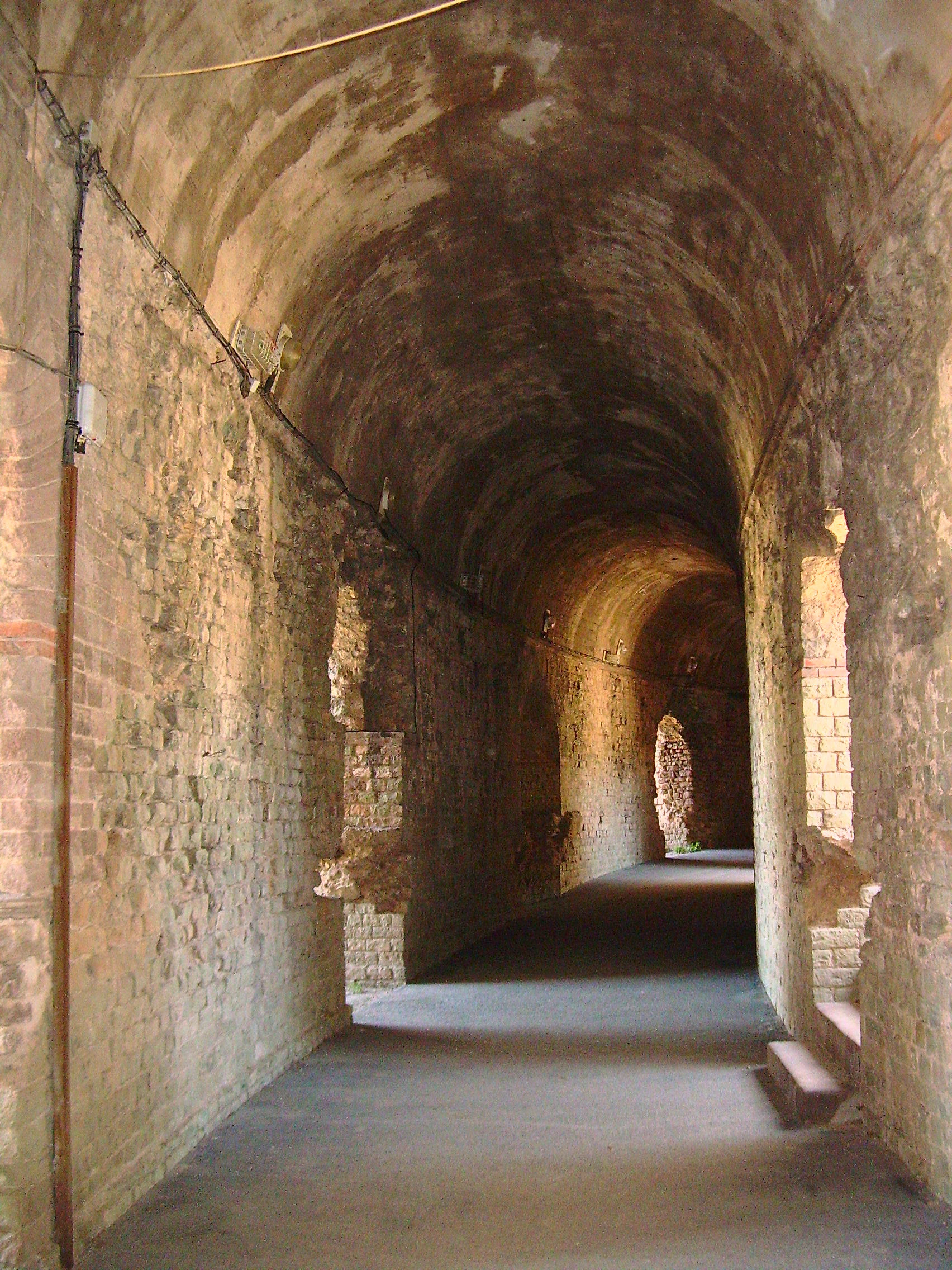
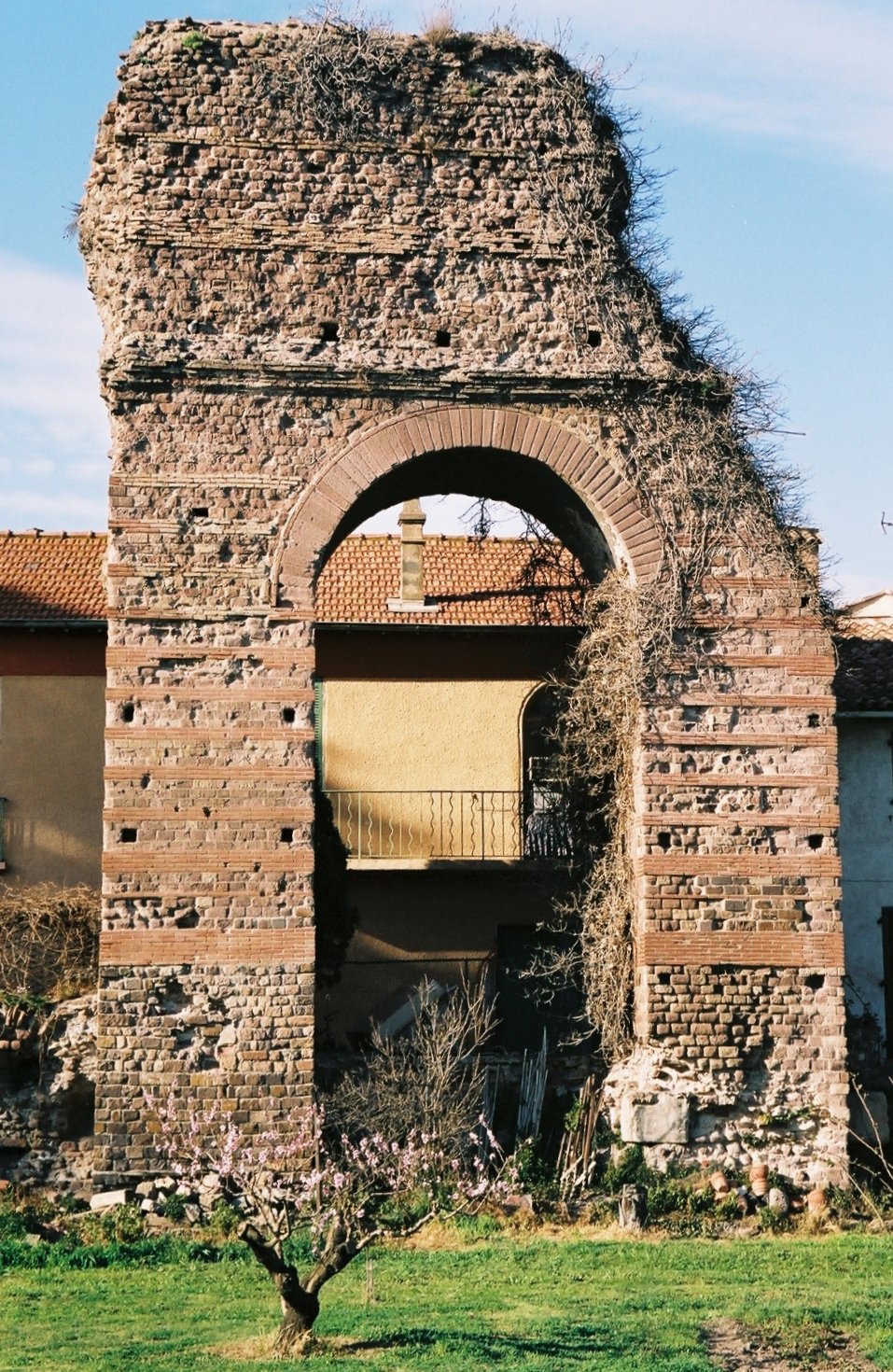 It was at Forum Julii that Octavius repatriated the galleys taken from
It was at Forum Julii that Octavius repatriated the galleys taken from
File:Lanterne Auguste.JPG, "Lanterne Auguste", Roman lighthouse
File:Pont romain des Esclapes.JPG, Roman road bridge "des Esclapes"
File:Frejus Baptisterium.jpg, Baptistry in the cathedral
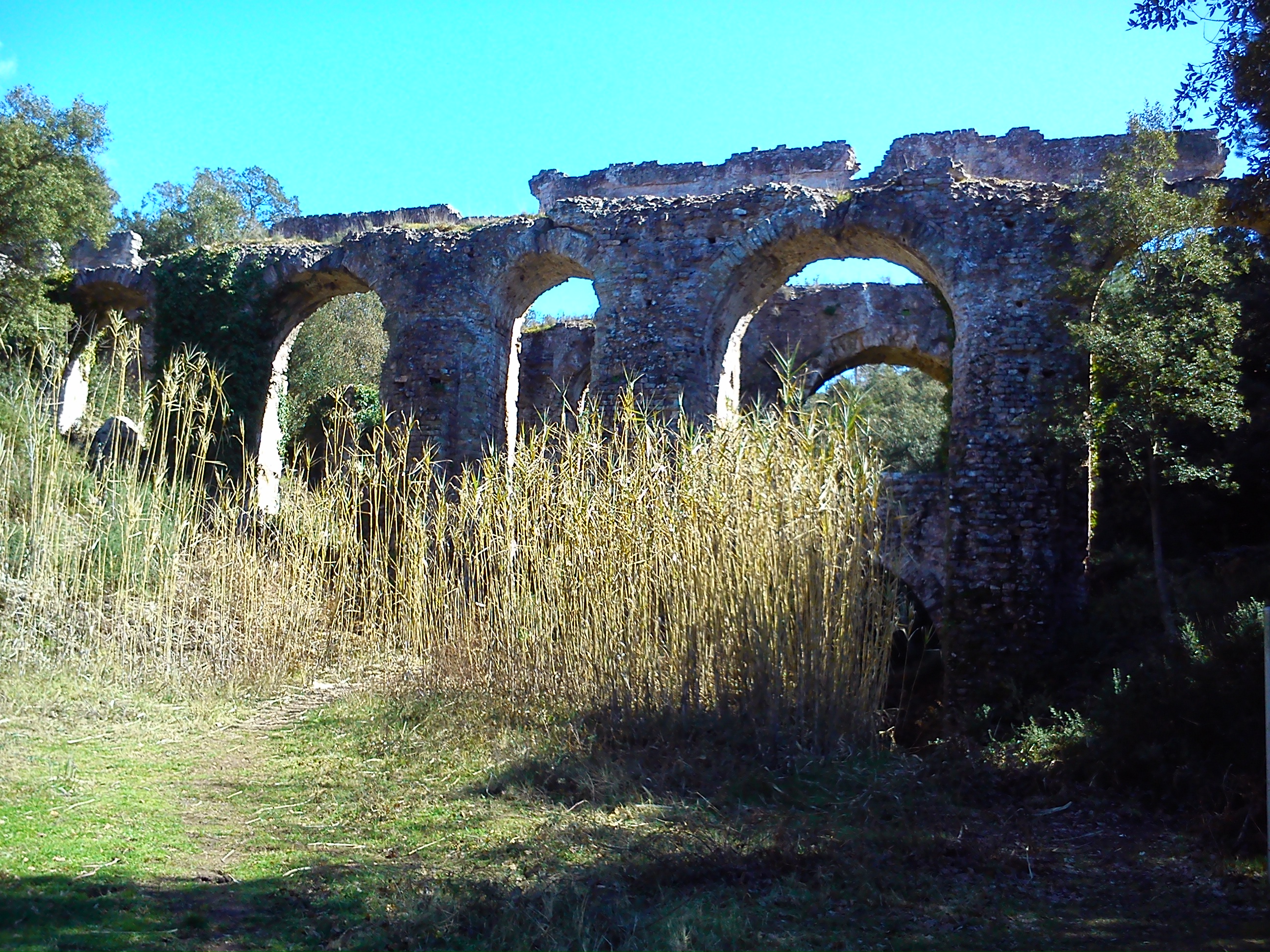
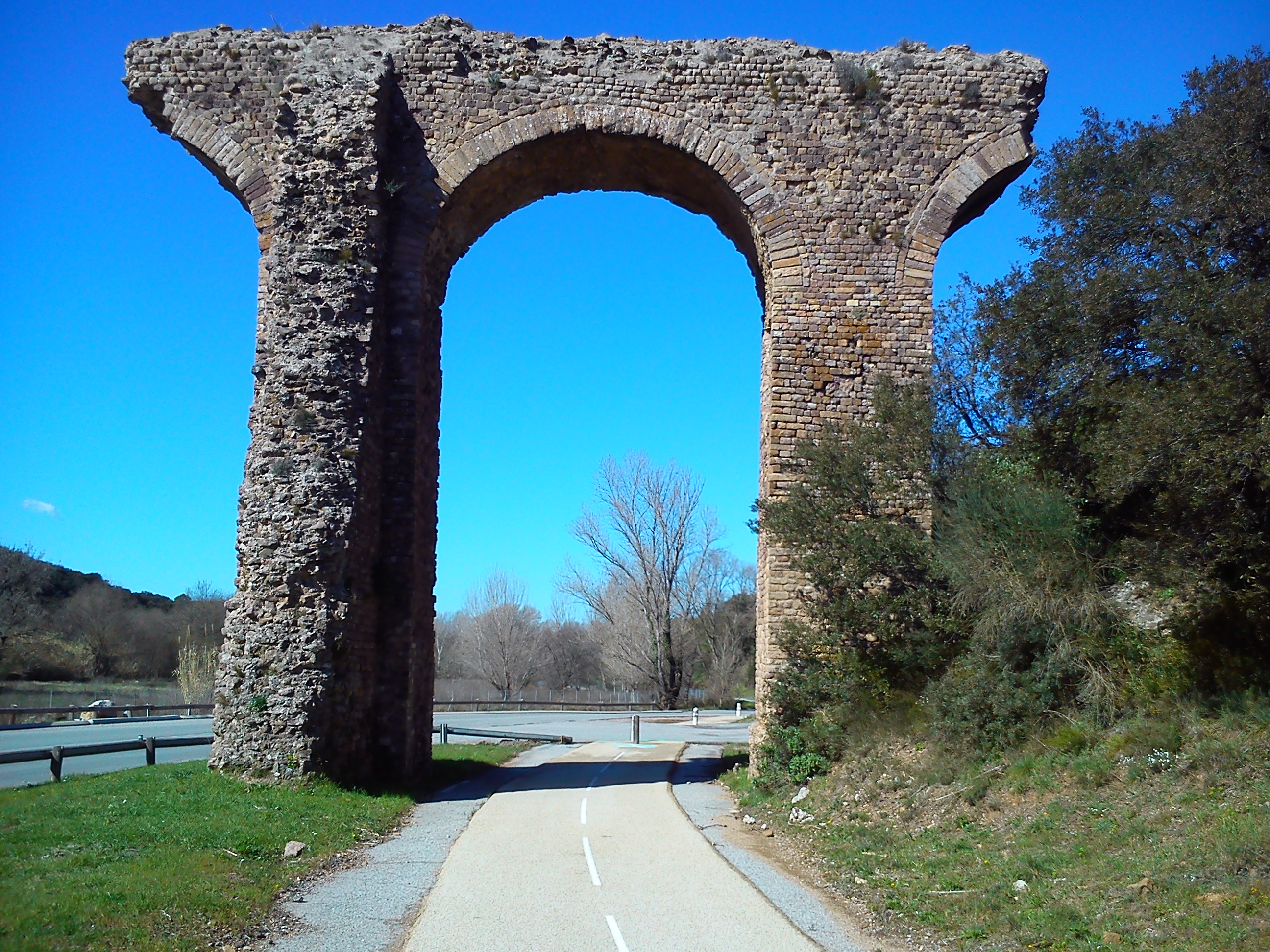
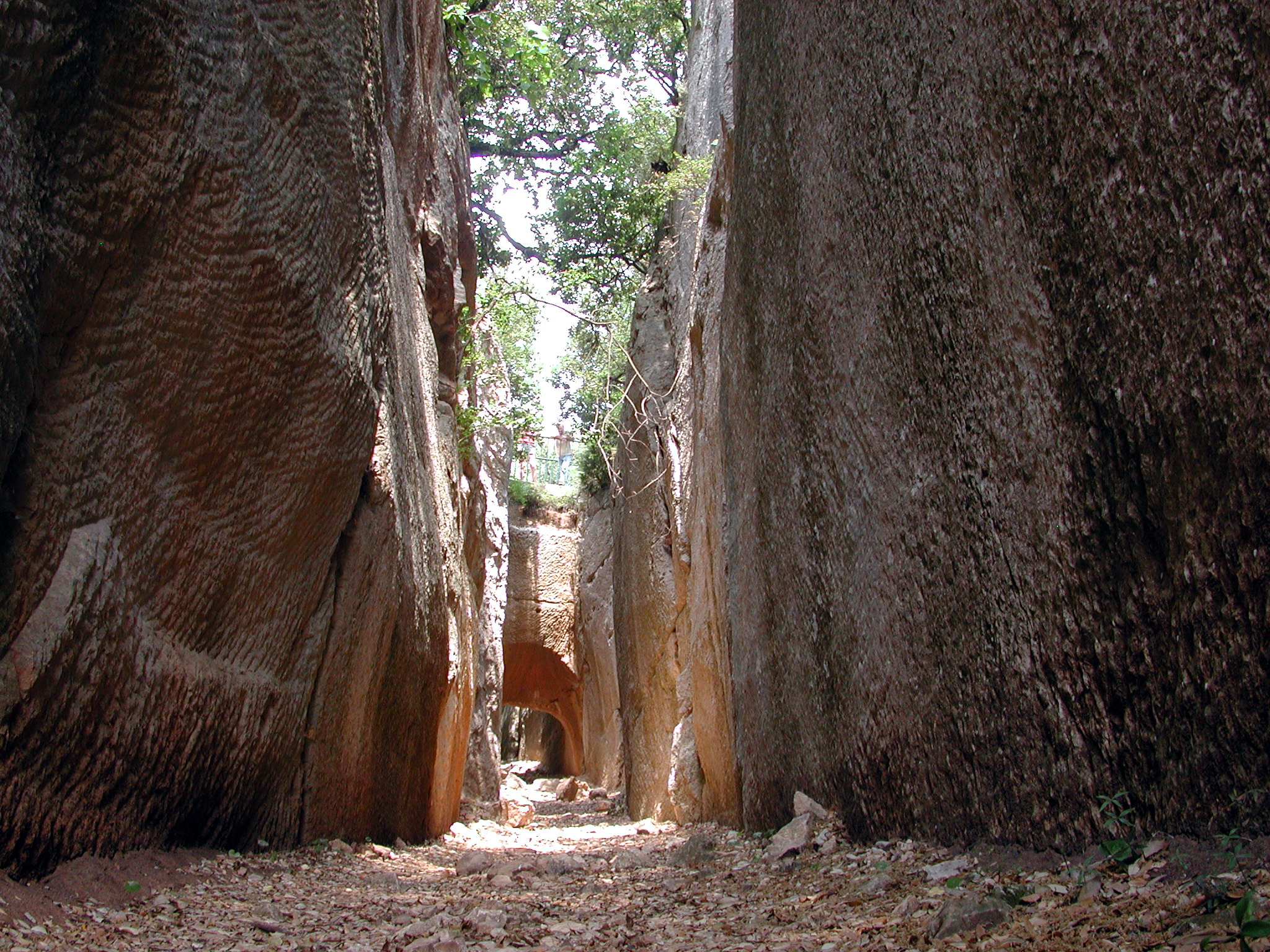
 Between the 7th and the 9th centuries, Muslim invaders repeatedly raided the city. The sea encroached on the land while invasions by the Muslims and pirates left the monuments in ruin. By the 10th century there was very little left of the colony, mostly rubble. Sea-borne silt clogged up the port and led to the formation of a huge swampy plain, which then separated the village from the sea.
Between the 7th and the 9th centuries, Muslim invaders repeatedly raided the city. The sea encroached on the land while invasions by the Muslims and pirates left the monuments in ruin. By the 10th century there was very little left of the colony, mostly rubble. Sea-borne silt clogged up the port and led to the formation of a huge swampy plain, which then separated the village from the sea.
 *
*
Official website
(in French)
Frejus website
Forum Julii in 3D
Fréjus la plate-forme
Tourism website
(in French)
Photo of Fréjus Cathedral
{{DEFAULTSORT:Frejus Communes of Var (department) French Riviera People from Fréjus Roman harbors in France Var communes articles needing translation from French Wikipedia
Provence-Alpes-Côte d'Azur
Provence-Alpes-Côte d'Azur (; or , ; commonly shortened to PACA; en, Provence-Alps-French Riviera, italic=yes; also branded as Région Sud) is one of the eighteen administrative regions of France, the far southeastern on the mainland. Its pre ...
region
In geography, regions, otherwise referred to as zones, lands or territories, are areas that are broadly divided by physical characteristics ( physical geography), human impact characteristics ( human geography), and the interaction of humanity an ...
in Southeastern France
France (), officially the French Republic ( ), is a country primarily located in Western Europe. It also comprises of Overseas France, overseas regions and territories in the Americas and the Atlantic Ocean, Atlantic, Pacific Ocean, Pac ...
. In 2019, it had a population of 54,458.
It neighbours Saint-Raphaël, effectively forming one urban agglomeration. The north of the commune forms part of the Massif de l'Esterel
The Massif de l'Esterel (Occitan Provençal: ''Esterèu''; English: Esterel Massif) is a Mediterranean coastal mountain range in the departments of Var and Alpes-Maritimes on the French Riviera. Neighbouring cities are Mandelieu-la-Napoule and C ...
. On 2 December 1959, the Malpasset Dam, on the Reyran River
The Reyran is a torrent of the Var department in Provence-Alpes-Côte d'Azur, France and a tributary of the Argens. It is an ephemeral stream, 26.8 km long, which originates in Bagnols-en-Forêt in the Var, 12 km from Fréjus.
The Rey ...
above the city of Fréjus, ruptured, killing over 400 people.
History
The origins of Frejus probably lie with the Celto- Ligurian people who settled around the natural harbour of Aegytna. The remains of a defensive wall are still visible on Mont Auriasque and Cap Capelin. The Phocaeans ofMarseille
Marseille ( , , ; also spelled in English as Marseilles; oc, Marselha ) is the prefecture of the French department of Bouches-du-Rhône and capital of the Provence-Alpes-Côte d'Azur region. Situated in the camargue region of southern Fra ...
later established an outpost on the site.
Foundation
Frejus was strategically situated at an important crossroads formed by theVia Julia Augusta
The Via Julia Augusta (modern Italian Via Giulia Augusta) is the name given to the Roman road formed by the merging of the Via Aemilia Scauri with the Via Postumia. The road runs from Placentia (modern Piacenza) to Arelate (modern Arles), initi ...
(which ran between Italy and the Rhône) and the Via Domitia
The Via Domitia was the first Roman road built in Gaul, to link Italy and Hispania through Gallia Narbonensis, across what is now Southern France. The route that the Romans regularised and paved was ancient when they set out to survey it, and ...
. Although there are only few traces of a settlement at that time, it is known that the poet Cornelius Gallus
Gaius Cornelius Gallus (c. 70 – 26 BC) was a Roman poet, orator and politician.
Birthplace
The identity of Gallus' purported birthplace, '' Forum Iulii'', is still uncertain, and it is based on the epithet "Foroiuliensis" that Jerome gave to h ...
was born there in 67 BC.
Julius Caesar
Gaius Julius Caesar (; ; 12 July 100 BC – 15 March 44 BC), was a Roman general and statesman. A member of the First Triumvirate, Caesar led the Roman armies in the Gallic Wars before defeating his political rival Pompey in a civil war, an ...
wanted to supplant Massalia and he founded the city as ''Forum Julii'' meaning 'market of Julius'. Tacitus also named its port ''claustra maris'' (gateway to sea).
The exact date of the founding of Forum Julii is uncertain, but it was certainly before 43 BC since it appears in the correspondence between Plancus
Lucius Munatius Plancus ( – ) was a Roman senator, consul in 42 BC, and censor in 22 BC with Paullus Aemilius Lepidus. Along with Talleyrand eighteen centuries later, he is one of the classic historical examples of men who have m ...
and Cicero
Marcus Tullius Cicero ( ; ; 3 January 106 BC – 7 December 43 BC) was a Roman statesman, lawyer, scholar, philosopher, and academic skeptic, who tried to uphold optimate principles during the political crises that led to the esta ...
and 49 BC is most likely.
Roman city

 It was at Forum Julii that Octavius repatriated the galleys taken from
It was at Forum Julii that Octavius repatriated the galleys taken from Mark Antony
Marcus Antonius (14 January 1 August 30 BC), commonly known in English as Mark Antony, was a Roman politician and general who played a critical role in the transformation of the Roman Republic from a constitutional republic into the au ...
at the Battle of Actium in 31 BC. Between 29 and 27 BC, it became a colony for his veterans of the 8th legion, adding the suffix ''Octavanorum Colonia''.
Augustus
Caesar Augustus (born Gaius Octavius; 23 September 63 BC – 19 August AD 14), also known as Octavian, was the first Roman emperor; he reigned from 27 BC until his death in AD 14. He is known for being the founder of the Roman Pr ...
made the city the capital of the new province of Narbonensis
Gallia Narbonensis ( Latin for "Gaul of Narbonne", from its chief settlement) was a Roman province located in what is now Languedoc and Provence, in Southern France. It was also known as Provincia Nostra ("Our Province"), because it wa ...
in 22 BC, spurring rapid development. It became one of the most important ports in the Mediterranean; its port was the only naval base for the Roman fleet of Gaul and only the second port after Ostia until at least the time of Nero.
Subsequently, under Tiberius
Tiberius Julius Caesar Augustus (; 16 November 42 BC – 16 March AD 37) was the second Roman emperor. He reigned from AD 14 until 37, succeeding his stepfather, the first Roman emperor Augustus. Tiberius was born in Rome in 42 BC. His father ...
, the major monuments and amenities still visible today were constructed: the amphitheatre, the aqueduct, the lighthouse, the baths and the theatre. Forum Julii had impressive walls of 3.7 km length that protected an area of 35 hectares. There were about six thousand inhabitants. The territory of the city, the civitas forojuliensis, extended from Cabasse in the west to Fayence
Fayence (; oc, Faiença) is a commune in the Var department in the Provence-Alpes-Côte d'Azur region in Southeastern France. In 2019, it had a population of 5,735.
Fayence is one of a series of "perched villages" overlooking the plain between ...
and Mons in the north.
It became an important market town for craft and agricultural production. Agriculture developed with villa rusticas such as at Villepey and Saint-Raphaël. Mining of green sandstone and blue porphyry and fish farming contributed to the thriving economy.
In 40 AD Gnaeus Julius Agricola, who later completed the Roman conquest of Britain, was born in Forum Julii. He was father-in-law of the historian Tacitus, whose biography of Agricola mentions that Forum Julii was an "ancient and illustrious colony". The city was also mentioned several times in the writings of Strabo
Strabo''Strabo'' (meaning "squinty", as in strabismus) was a term employed by the Romans for anyone whose eyes were distorted or deformed. The father of Pompey was called " Pompeius Strabo". A native of Sicily so clear-sighted that he could s ...
and Pliny the Elder
Gaius Plinius Secundus (AD 23/2479), called Pliny the Elder (), was a Roman author, naturalist and natural philosopher, and naval and army commander of the early Roman Empire, and a friend of the emperor Vespasian. He wrote the encyclopedic ' ...
.
In early 69 the Battle of Forum Julii was fought between the armies of the rival emperors Otho and Vitellius. The exact location of this battle is not known, but afterwards Vitellius retreated to Antipolis.
The 4th century saw the creation of the Diocese of Fréjus
In church governance, a diocese or bishopric is the ecclesiastical district under the jurisdiction of a bishop.
History
In the later organization of the Roman Empire, the increasingly subdivided provinces were administratively associat ...
, France's second largest after that of Lyon; the building of the first church is attested in 374 with the election of a bishop. Saint-Léonce became Bishop of Fréjus in 433 and wrote:
"From 374, at the Council of Valencia, a bishop was appointed in Frejus, but he never came. I was the first of the bishops of that city. I was able to build the first Cathedral with its Baptistery."
The decay of Rome led to that of the cities of its empire.
Monuments
The richest architecture belongs to the Roman city whose many buildings make it the richest concentration of this period in France afterArles
Arles (, , ; oc, label= Provençal, Arle ; Classical la, Arelate) is a coastal city and commune in the South of France, a subprefecture in the Bouches-du-Rhône department of the Provence-Alpes-Côte d'Azur region, in the former province ...
. The most notable are the amphitheatre
An amphitheatre (British English) or amphitheater (American English; both ) is an open-air venue used for entertainment, performances, and sports. The term derives from the ancient Greek ('), from ('), meaning "on both sides" or "around" and ...
, the aqueduct from Mons, Var
Mons (; oc, Monts or ) is a commune in the Var department in the Provence-Alpes-Côte d'Azur region in southeastern France.
Geography
Situated at an altitude of 814 metres the commune of Mons encompasses a vast territory of in the Var, Provenc ...
, as well as the theatre.
In addition the old town is home to many other impressive remains, city walls, the two gates (of Rome, of Reyran), the square of Agricola with the gate of the Gauls, an exedra and the platform with a cistern on the Butte Saint-Antoine, the paving of the via Aurelia which passed through the city, the remains of the ancient harbour with the remains of the north quay, the lighthouse and quay of Augustus, a mosaic floor of fighting cocks in a private property, the sewers under the present rue Jean Jaures, the baptistry in Frejus Cathedral dates from the 5th c. and columns there are from Roman buildings.
No less than five public baths are known in the city, those of the Porte Dorée, the Plate-Forme, les Poiriers, Villeneuve (probably military) and on the Butte Saint-Antoine, three of which are outside the city walls.
A probable military or naval camp was excavated at Aiguières, Villeneuve near the ancient shore line. are incorporated in modern buildings, and also a 4th-century mausoleum at rue de La Tourrache. The remains of a suburban villa are at La Rose des Sables. Roman road bridges still exist at Cantonniers and at Esclapes (with three arches), a fulling mill at Arsenal, and a necropolis in Sainte-Brigitte and fishponds on the coast at Saint-Aygulf.
Aqueduct
The aqueduct is 42 km long and runs for 1.8 km on bridges and 500m on walls. Large parts of the aqueduct are still well preserved.


Roman port
An archaeological campaign in July 2005 revealed a portion of ancient rocky coast which showed it was almost one kilometre further inland than current estimates. In the middle of the 1st century AD at the time of the creation of Forum Iulii, this coastline was a narrow band of approximately 100m wide at the south of the Butte Saint-Antoine. Further recent archaeology has revealed much information on the ancient port. A Triton monument was discovered at the entrance to the harbour. This statue and the remains of a Roman building at the end of the eastern quay nearby, shows this site to be a lighthouse. Two lighthouses were constructed on the quays and a third assisted mariners in locating the harbour's sea entrance. The third, situated on the Île du Lion de Mer, would have been the primary beacon that ships would have navigated toward. As ships approached the harbour, the Triton lighthouse on the northern side of the channel into the harbour and the other lighthouse on the southern side would have marked the entrance and thus provided safe passage into the harbour.Post-Roman history
 Between the 7th and the 9th centuries, Muslim invaders repeatedly raided the city. The sea encroached on the land while invasions by the Muslims and pirates left the monuments in ruin. By the 10th century there was very little left of the colony, mostly rubble. Sea-borne silt clogged up the port and led to the formation of a huge swampy plain, which then separated the village from the sea.
Between the 7th and the 9th centuries, Muslim invaders repeatedly raided the city. The sea encroached on the land while invasions by the Muslims and pirates left the monuments in ruin. By the 10th century there was very little left of the colony, mostly rubble. Sea-borne silt clogged up the port and led to the formation of a huge swampy plain, which then separated the village from the sea.
Napoleon
Napoleon Bonaparte ; it, Napoleone Bonaparte, ; co, Napulione Buonaparte. (born Napoleone Buonaparte; 15 August 1769 – 5 May 1821), later known by his regnal name Napoleon I, was a French military commander and political leader wh ...
landed at Frejus on 9 October 1799, returning from Egypt in order to ostensibly defend the French Directory
The Directory (also called Directorate, ) was the governing five-member committee in the French First Republic from 2 November 1795 until 9 November 1799, when it was overthrown by Napoleon Bonaparte in the Coup of 18 Brumaire and replaced b ...
in Paris.
During the First World War
World War I (28 July 1914 11 November 1918), often abbreviated as WWI, was List of wars and anthropogenic disasters by death toll, one of the deadliest global conflicts in history. Belligerents included much of Europe, the Russian Empire, ...
Fréjus became the main centre for ''hivernage
Hivernage (, ) was the practice in the French Army of withdrawing sub-Saharan African colonial troops from colder theatres to overwinter in warmer climates. Such troops were first deployed to Morocco from 1908 and losses were experienced due to ...
'' (wintering) for the Senegalese Tirailleurs. The town also contained segregated hospitals with images of African village life painted on the walls.
Geography
As a backdrop there is theMassif de l'Esterel
The Massif de l'Esterel (Occitan Provençal: ''Esterèu''; English: Esterel Massif) is a Mediterranean coastal mountain range in the departments of Var and Alpes-Maritimes on the French Riviera. Neighbouring cities are Mandelieu-la-Napoule and C ...
.
Demographics
Politics
In2014
File:2014 Events Collage.png, From top left, clockwise: Stocking up supplies and personal protective equipment (PPE) for the Western African Ebola virus epidemic; Citizens examining the ruins after the Chibok schoolgirls kidnapping; Bundles of wa ...
, David Rachline
David Rachline (born 2 December 1987) is a French politician for National Rally. He was elected mayor of Fréjus in March 2014 and elected to the French Senate in September 2014.
Early life and education
David Rachline was born the son of soci ...
of the National Front (later renamed National Rally) was elected Mayor of Fréjus.
Economy
Fréjus is a resort town which hosts three to four times as many people as its regular inhabitants over the summer. It organises several fairs throughout the year; there is the pottery fair and the Bravade amongst its Roman and Gothic architecture with the 'old tile' roof tops and tinted walls. Port Fréjus which has a capacity of 750 moorings, is surrounded by beautiful fine sandy beaches. There is an annual ' Roc d'Azur' mountain bike event.Transport
The Fréjus railway station offers connections to Saint-Raphaël, Les Arcs and Cannes and a few other regional destinations. Long distance destinations are accessible from the nearby Saint-Raphaël-Valescure station. TheA8 autoroute
The A8 autoroute, also known as La Provençale, is a -long highway in France that runs between Aix-en-Provence and the A7 to the Côte d'Azur.
Route
The A8 is an extension of the A7 starting to the west of Aix-en-Provence at La Fare-les-Oli ...
connects Fréjus with Aix-en-Provence and Nice
Nice ( , ; Niçard: , classical norm, or , nonstandard, ; it, Nizza ; lij, Nissa; grc, Νίκαια; la, Nicaea) is the prefecture of the Alpes-Maritimes department in France. The Nice agglomeration extends far beyond the administrative ...
.
Climate
Fréjus has a hot-summer mediterranean climate (Köppen climate classification
The Köppen climate classification is one of the most widely used climate classification systems. It was first published by German-Russian climatologist Wladimir Köppen (1846–1940) in 1884, with several later modifications by Köppen, nota ...
: Csa).
Twin towns and sister cities
Fréjus is twinned with: * Fredericksburg, Virginia, United States * Triberg, Germany * Dumbéa, New Caledonia *Paola
Paola is a female given name, the Italian form of the name Paula. Notable people with the name include:
People In arts and entertainment
*Paola Del Medico (born 1950), Swiss singer
* Paola e Chiara, pop music duo consisting of two sisters born ...
, Italy
* Tabarka, Tunisia
Notable people
 *
*Cornelius Gallus
Gaius Cornelius Gallus (c. 70 – 26 BC) was a Roman poet, orator and politician.
Birthplace
The identity of Gallus' purported birthplace, '' Forum Iulii'', is still uncertain, and it is based on the epithet "Foroiuliensis" that Jerome gave to h ...
(ca.70–26 BC), a Roman poet, orator and politician.
* Gnaeus Julius Agricola (AD 40–93) a Roman governor of the province of Britain.
* St. Maximus (died 460), Abbot at Lerins and Bishop of Frejus
* Marc-Antoine Désaugiers (1742–1793) & Marc-Antoine Madeleine Désaugiers
Marc-Antoine Madeleine Désaugiers (17 November 1772 – 9 August 1827) was a French composer, dramatist, and songwriter.
Désaugiers is easily confused in historical writings with his father, Marc-Antoine Désaugiers (b. Fréjus, 1742 – d. Par ...
(1772–1827) French composers
*Emmanuel Joseph Sieyès
Emmanuel-Joseph Sieyès (3 May 174820 June 1836), usually known as the Abbé Sieyès (), was a French Roman Catholic '' abbé'', clergyman, and political writer who was the chief political theorist of the French Revolution (1789–1799); he also ...
(1748–1836), known as ''Abbé Sieyès,'' French Revolution
The French Revolution ( ) was a period of radical political and societal change in France that began with the Estates General of 1789 and ended with the formation of the French Consulate in November 1799. Many of its ideas are conside ...
theorist and author of '' What is the Third Estate?''.
* Patrick Salameh (born 1957), a French criminal and serial killer.
* Belinda Carlisle (born 1958), American singer, musician & author; partly lived here 1994-2017.
* Casey Legler (born 1977) a French-American writer, restaurateur, model and former Olympic swimmer.
*Anna Mouglalis
Anna Mouglalis ( el, Άννα Μουγλάλη; born 26 April 1978) is a French actress and model. She is known for being a house ambassador for Chanel since 2002, and for portraying the fashion designer Coco Chanel in the 2009 film '' Coco Chane ...
(born 1978) a French actress and model.
*David Rachline
David Rachline (born 2 December 1987) is a French politician for National Rally. He was elected mayor of Fréjus in March 2014 and elected to the French Senate in September 2014.
Early life and education
David Rachline was born the son of soci ...
(born 1987) politician and mayor of Fréjus from March 2014
Sport
* Odiah Sidibe (born 1970) a French sprint athlete of Guinean descent * Yoann Richomme (born 1983), a French navigator, sailor and yacht skipper. *Adil Rami
Adil Rami (born 27 December 1985) is a French professional footballer who plays as a centre-back for club Troyes, for which he is the captain.
Rami began his football career playing for amateur club Étoile Fréjus Saint-Raphaël, then known a ...
(born 1985) a footballer with about 450 club caps and 36 for France
France (), officially the French Republic ( ), is a country primarily located in Western Europe. It also comprises of Overseas France, overseas regions and territories in the Americas and the Atlantic Ocean, Atlantic, Pacific Ocean, Pac ...
* Marc Andreu (born 1985), rugby union player
* Kévin Constant (born 1987), a footballer with 228 club caps and 24 for Guinea
* Anthony Modeste, (born 1988) a French footballer with over 400 club caps
*Layvin Kurzawa
Layvin Marc Kurzawa (born 4 September 1992) is a French professional footballer who plays as a left-back for Premier League club Fulham, on loan from Ligue 1 club Paris Saint-Germain.
Kurzawa began his career at Monaco in 2010, and played 96 o ...
(born 1992), a footballer with over 200 club caps and 13 for France
France (), officially the French Republic ( ), is a country primarily located in Western Europe. It also comprises of Overseas France, overseas regions and territories in the Americas and the Atlantic Ocean, Atlantic, Pacific Ocean, Pac ...
See also
* Bishopric of Fréjus * Malpasset * Communes of the Var departmentReferences
External links
*Official website
(in French)
Frejus website
Forum Julii in 3D
Fréjus la plate-forme
Tourism website
(in French)
Photo of Fréjus Cathedral
{{DEFAULTSORT:Frejus Communes of Var (department) French Riviera People from Fréjus Roman harbors in France Var communes articles needing translation from French Wikipedia